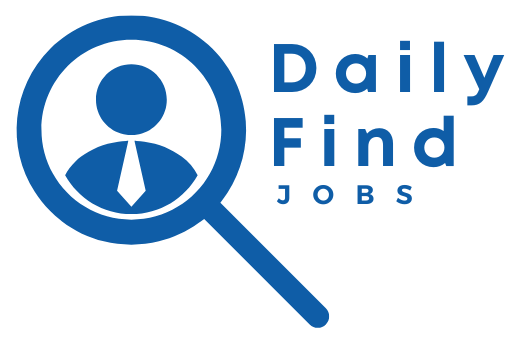In today’s competitive job market, your LinkedIn headline acts as your digital first impression. How to Write a LinkedIn Headline That Gets Noticed is crucial for grabbing recruiters’ attention and setting yourself apart. Understanding how to craft headlines using effective keywords is integral, so learning about common pitfalls and standout examples can elevate your profile. Let’s dive into creating headlines that not only capture attention but also drive connections.
Why Your LinkedIn Headline Matters
Your LinkedIn headline is more than just a job title. It’s a sneak peek into who you are as a professional. A strong headline acts as a magnet, drawing the right people to your profile. It’s crucial because it’s among the first things people see, along with your name and photo. A well-crafted headline can make you stand out in search results, boosting your visibility.
First Impressions Count
A captivating headline will open doors to potential connections, interviews, and job offers. Recognizing the impact of those few words, you can maximize their use by conveying your unique value proposition. Context matters, and every character should serve a purpose.
Why Precision Matters
Precision in your LinkedIn headline allows you to target specific roles and industries. It’s about making your experience and skills shine with clarity. Make it engaging, concise, and memorable. The effectiveness of your headline directly ties to how clearly it communicates your expertise and aspirations without unnecessary jargon.
Crafting the Perfect Headline
Your LinkedIn headline is often the first impression you make on potential employers, clients, or connections. The goal is to immediately convey your professional identity and value. To craft an impactful headline, you should begin by identifying your unique selling proposition (USP). This is what sets you apart from others in your field.
Next, consider your audience. What do they value? What keywords would they be searching for? Incorporating relevant keywords can significantly increase your visibility in search results. However, avoid keyword stuffing. Instead, aim for keywords that naturally fit your professional narrative.
Focus on Clarity and Impact
When forming your headline, opt for clarity. Use language that is both straightforward and compelling. A headline that is easy to read and understand is more likely to engage others.
Lastly, keep it concise. Limit your headline to one strong sentence or phrase that encapsulates your profession and value. This requires some creativity, but with careful crafting, your headline will stand out in searches and network feeds.
Using Keywords Effectively
Including the right keywords in your LinkedIn headline can significantly boost its visibility. It is essential to identify the words and phrases that capture the essence of your professional identity and resonate with what potential connections or employers are searching for. Remember, the LinkedIn algorithm favors profiles that effectively use relevant keywords.
Start by researching industry-specific terms and roles you’re interested in. Analyze the profiles of successful professionals in your field to identify patterns in their headlines. Look for keywords that consistently appear in these profiles and consider how they apply to your own experiences and skills.
Optimize placement by positioning crucial keywords at the beginning of your headline, as this can enhance its impact and improve searchability. Use a mix of broad terms and specific phrases, creating a balanced approach that reaches a wide audience while also targeting particular sectors.
Avoid stuffing your headline with too many keywords, as this can come across as unprofessional and reduce readability. Instead, focus on semantic relevance and natural language. Craft your message clearly and concisely, echoing how you wish to be perceived in the professional space.
Regularly update your headline to reflect any changes in your skills or shifts in industry trends. By doing so, you keep your profile fresh and maintain relevance, adapting to the evolving landscape of your professional domain.
Mistakes to Avoid in Headlines
Creating an effective LinkedIn headline requires avoiding specific missteps that can undermine your goals. One common mistake is using generic phrases that fail to differentiate you from others in your field. A headline like “Experienced Professional” is too vague and doesn’t grab attention.
Another pitfall is overloading with jargon. This can confuse readers who are not familiar with technical terms. Instead, aim for clarity by using straightforward language.
It’s also crucial to avoid making your headline too long. While it’s tempting to include everything you do, lengthy headlines get cut off in search results. Keep it concise while ensuring it conveys your key message.
Moreover, don’t forget to update your headline regularly to reflect your most current roles and achievements. Outdated headlines might lead to missed opportunities.
Avoid using only your job title as well. While it tells people your position, it doesn’t show them who you are as a professional. Add a short, compelling phrase to express your unique value.
Lastly, neglecting the use of keywords can result in missed visibility. Make sure to incorporate relevant keywords that potential employers or clients might use when searching for someone with your expertise.
Headline Examples That Stand Out
Creating a standout LinkedIn headline can make a huge difference in how often you catch the eyes of potential employers or connections. Headlines that pack a punch often include a few critical elements. First, they should be clear and concise. A good headline brings your professional identity into focus without being wordy. Clarity helps your message get through quickly, which is crucial in today’s fast-paced world.
Next, seek to highlight your unique value. What makes you different from the thousands of other professionals in your field? This could be a special skill, a noteworthy achievement, or your professional passion. By incorporating this element into your headline, it directly communicates what sets you apart.
Another approach is using action-oriented language that suggests growth and achievement. Words like “building,” “leading,” or “creating” can suggest that you are someone who actively contributes and adds value.
Incorporating numbers or statistics when relevant can also make your headline more compelling. Numbers can illustrate your achievements or the breadth of your experience, such as “Managed a team of 50+” or “Increased sales by 200%.”
Let’s not forget that authenticity plays a great role in crafting standout headlines. While optimizing for searchability and impact, ensure your headline still reflects your true professional self. Those who view your profile will appreciate genuine and precise representation.


